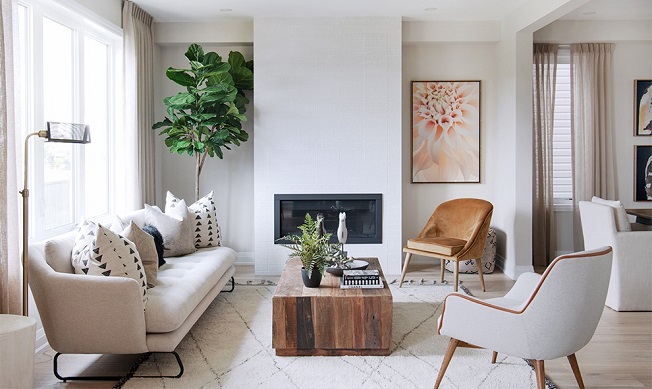Pre Move-In
Pre Move-In
Condo Living
 Condo Living
Condo Living
Understanding the benefits of a condominium
When you buy a condominium, you are buying one unit within a multi-unit residential dwelling. Each unit is individually owned, but all unit owners share joint ownership of the common elements of the building. It’s important to understand the benefits and important differences from a freehold home so that you enjoy your condo lifestyle to its full potential.
Interim Occupancy
On your interim occupancy date, you are able to occupy or “take possession” of the unit you have bought. During this period you will be required to pay monthly interim occupancy fees as specified in the Condominium Act.
Final Closing
Shortly after Minto completes the condominium registration, final closing takes place, and you will receive title of ownership for your unit. At this point, your mortgage will come into effect, enabling you to pay the balance of the total purchase price for your unit, inclusive of any additional fees.
Your unit
In a condominium, it is important to understand what constitutes your ‘unit’ - the part of the building you own outright. Your agreement and condo documents describe the boundaries of your unit.
Common elements
The common elements are those parts of a condominium that are jointly owned by all unit owners: the lobby, other building amenities, parking garages, lockers, corridors, roof, balconies, garbage rooms, gardens and exterior amenities, private roads or parking lots, and any other spaces not owned by an individual owner. Your monthly condominium fees cover maintenance and insurance for these areas.
Condominium Board of Directors
Once the building is turned over to the Condominium Corporation by your builder, the Board of Directors is elected and is composed of volunteer residents. The Board governs the Condominium Corporation and oversees its operations, both financial and physical.

Property Management
The builder contracts an external company as the Property Manager to oversee the day-to-day management of the condominium and to act on behalf of the Condominium Corporation. Once the Condo Board of Directors is established, they may choose to extend or replace the property management contract.
Condo documents
As part of your Agreement of Purchase and Sale you will also find your condo documents, which include a condo declaration, by-laws, and rules. Together, these documents guide the governance of your condo by detailing the responsibilities and rules each owner is required to adhere to. It is a good idea to familiarize yourself with these documents during your conditional period in case there are any questions.
Condo or maintenance fees
Monthly condo fees are collected from all condo unit owners to maintain the shared amenity spaces (common elements) and retain a property manager. These fees are calculated based on a budget of estimated costs to run the shared spaces of the condo and divided by the square footage of each unit. At time of sale, this budget is estimated, meaning the condo fee could change by the time you take possession or over the course of the condo’s lifecycle.
Interim occupancy fees
Once you take possession (receive the keys) of your unit, but before the condo is fully registered, your mortgage and transfer of title will not take effect until the final closing. During this period you will be required to pay monthly interim occupancy fees as specified in the Condominium Act. The fees are limited to a total of the following: Common Expense Fee (which includes maintenance and Condo fees), property taxes, and interest owing on the remaining balance of the total purchase price of your Condo.
Elevators (if applicable)
During construction, elevators are often in service for use by construction workers, for testing purposes in order to obtain certification, and for preliminary move-ins. Security guards are stationed at each elevator to ensure your safety and security, as well as the ongoing operation and efficient use of all elevators.
You may also find temporary boards installed on the exterior of the elevators. This is to protect the elevator from damage occurring as homeowners start moving their furniture in. They will be removed once the majority of homeowners have occupied.

We're here to help
Just Tell us How

Your Customer Experience Coordinator can provide any answers or connect you with the right person to address any questions - during regular business hours.







